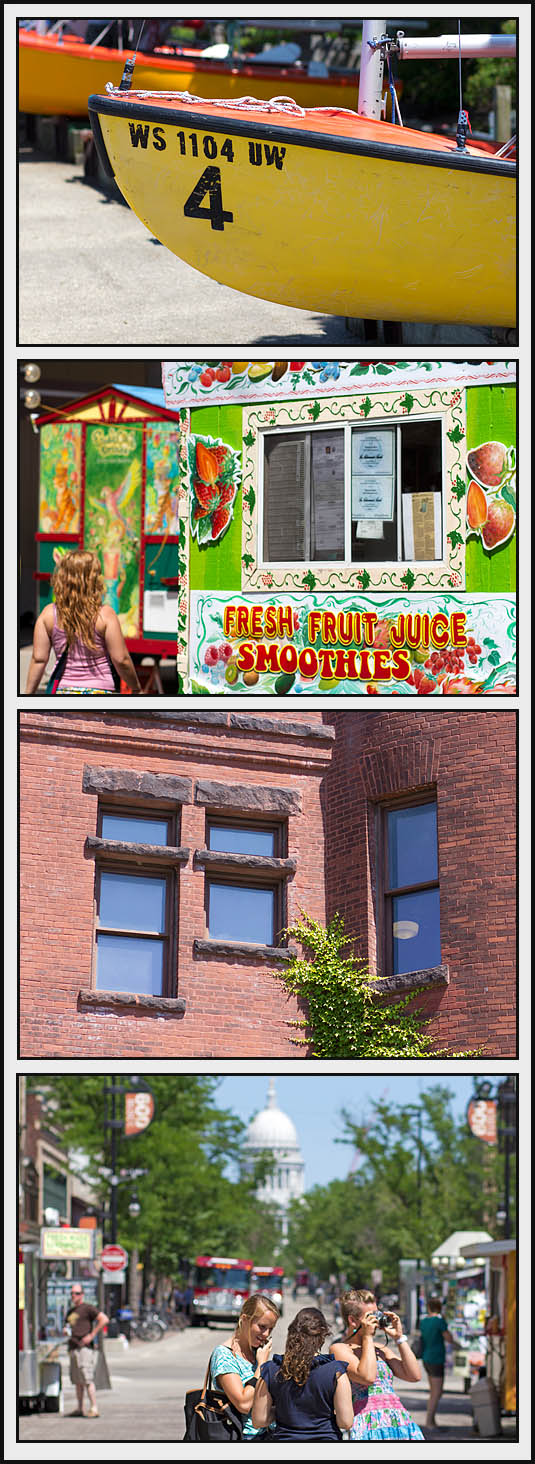The rain on Main was slow to go down the drain
Eight inches of rain in a 20-hour stretch led to widespread flooding damage in my community last week. Kudos to the city for collecting water-damaged items for free, though these two chairs, kicked to the curb by my neighbor, appear to be in decent shape. I bet I could have Craigslisted them for at least 20 bucks a pop.
Rock ‘n’ Rubble High School
Though my high school experience was a mixed bag, I’m struck by a nostalgic sense of loss every time I pass by the demolition site seen below. Day by day, Wheaton Central High School — an institution that educated the likes of Edwin Hubble, Red Grange, Bob Woodward, John Belushi, and, much further down the list, me — is being pounded by a wrecking ball, a process slowed by the presence of asbestos that needs to be hosed down and carefully removed.
And what will take the place of the school? A gourmet grocery store, naturally.
Planes, Trains, and Outrageous Property Taxes
Planes, Trains, and Automobiles is one of my all-time favorite comedies, so my interest was piqued when I learned that a home featured prominently in the film had gone on the market. The house — owned on screen by advertising exec Neil Page, played by Steve Martin — can be yours for the sizable sum of $1.79 million. You’ll also need to come up with $25K/year to cover the property taxes.
Frankly, for any home priced north of $500K, I’d expect a fresh coat of blacktop on the driveway. But, as always in real estate, it’s a matter of location, location, location. The home sits two blocks from Lake Michigan in the tony hamlet of Kenilworth, ranked by Forbes as America’s second most affluent neighborhood.
Buy a house for a buck
Surrounded by posh abodes worth north of $500,000, the 117-year-old home at 8 Park Drive in the Chicago suburb of Glenview can be yours for a mere dollar. The catch? The buyer has to uproot the massive structure and move it to a new site.
 The owner of the home, the Glenview New Church, wants to redevelop the property. If a buyer doesn’t come forward soon, the home likely will be torn down. The Queen Anne-style dwelling lacks a landmark designation even though it possesses significant historical value. It was designed and owned by Hugh Burnham, Glenview’s first village president and the nephew of the famed city planner of Chicago, Daniel Burnham.
The owner of the home, the Glenview New Church, wants to redevelop the property. If a buyer doesn’t come forward soon, the home likely will be torn down. The Queen Anne-style dwelling lacks a landmark designation even though it possesses significant historical value. It was designed and owned by Hugh Burnham, Glenview’s first village president and the nephew of the famed city planner of Chicago, Daniel Burnham.
According to Trulia, the annual property taxes on the uninhabited home are a steep $12,713, which may explain why the pastor of the New Church described the residence as a “money pit” in an interview with TribLocal.
Urban Indy examines a neighborhood’s demise
Urban Indy, a collaborative blog focused on urban design in Indianapolis, features an excellent post this week on a residential neighborhood that was wiped off the map by the construction of Interstate 65. The author, Chris Corr, uses aerial photos archived by the city — and easily accessible online — to show how a neighborhood nestled along Fall Creek and adjacent to Boulevard Place (the street on which my wife and I bought our first home) was transformed from tree-lined rows of homes to a blah blend of concrete and vacant spaces.
Not to decry the Eisenhower Interstate System, the benefits of which are significant. But Corr’s piece is valuable in that it forces you to consider that the mobility we enjoy is not without its costs. In this case, accessibility to Fall Creek was rendered challenging if not impossible, perfectly livable homes were razed, and, most importantly, families were forced to leave a seemingly scenic and pleasant neighborhood conveniently situated near downtown Indianapolis.






